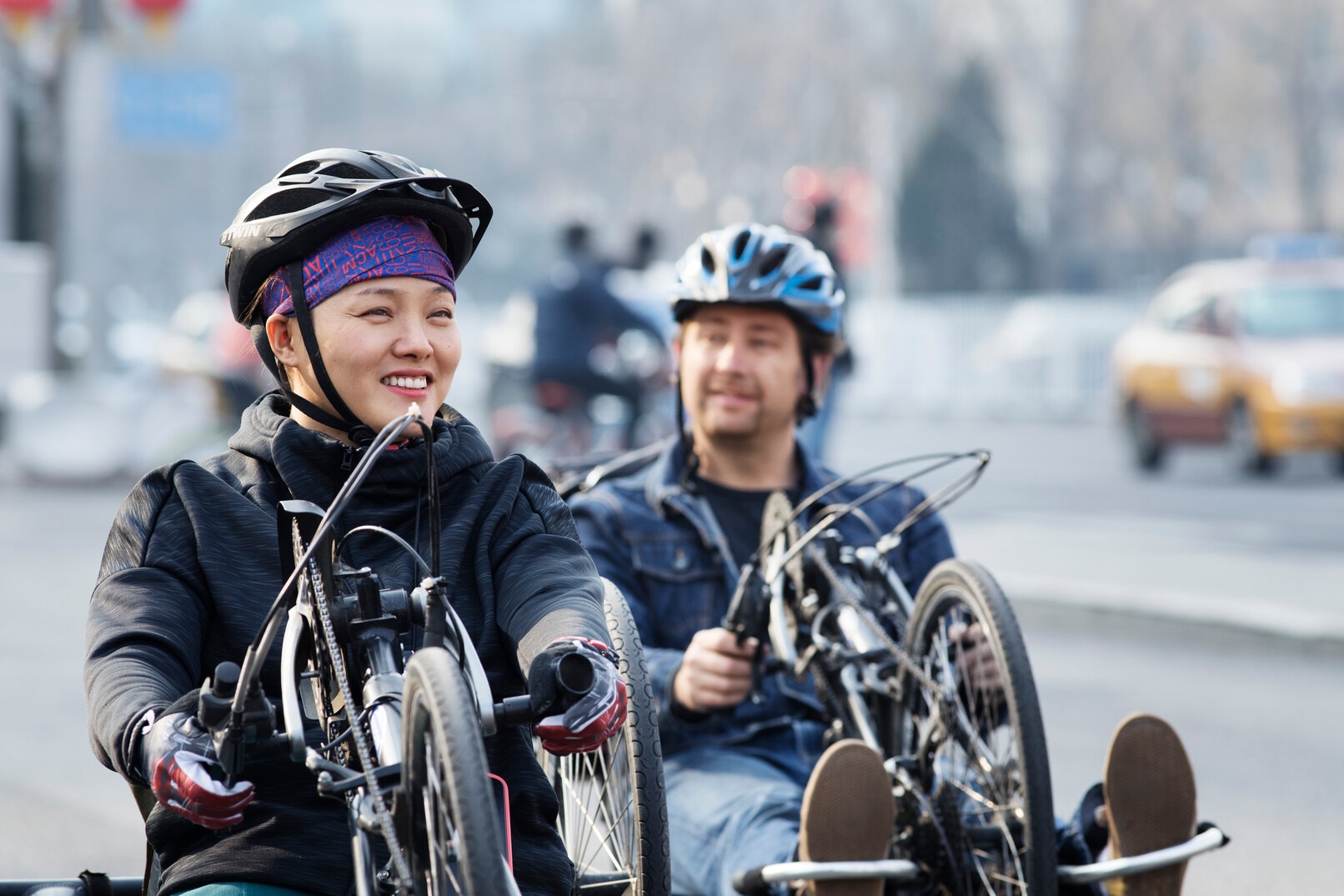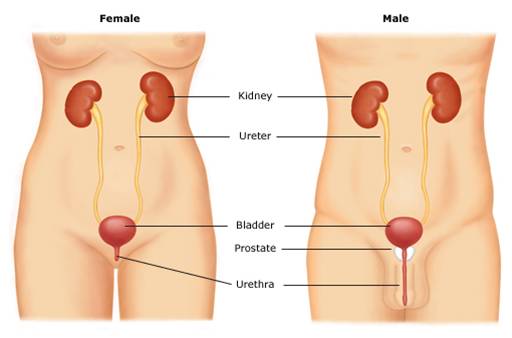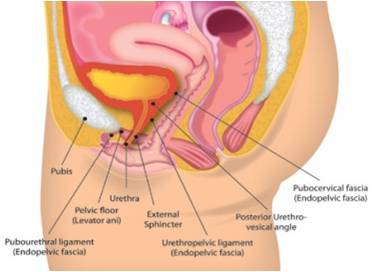Erhalten Sie vollen Zugriff mit einem kostenfreien Konto
Vorteile von Coloplast® Professional
![]() Erhalten Sie vollen Zugriff auf alle Inhalte, Veranstaltungen und Materialien
Erhalten Sie vollen Zugriff auf alle Inhalte, Veranstaltungen und Materialien
![]() Verfolgen Sie Ihren Fortschritt
Verfolgen Sie Ihren Fortschritt
![]() Teilen Sie unterstützendes Material mit Ihrem Patienten
Teilen Sie unterstützendes Material mit Ihrem Patienten
![]() Teilen Sie Inhalte mit Ihren Kollegen
Teilen Sie Inhalte mit Ihren Kollegen

Living with bladder problems
If you experience bladder/urinary problems there is a chance that your health and quality of life will be significantly impacted. In order to clarify the cause of your symptoms and to rule out anything potentially serious, it is important to consult a healthcare professional.
Introduction to bladder problems
Bladder problems typically take the form of urinary incontinence (leaking urine) and urinary retention (inability to empty the bladder) and can arise from neurogenic conditions such as spinal cord injury, multiple sclerosis and spina bifida. Incontinence and retention can also be age related, or result from an underlying physical disease, caused by a dysfunction in the bladder. Learn how the bladder works.
Urinary incontinence
There are different types of urinary incontinence, each with different symptoms and causes. The most common types of urinary incontinence are stress urinary incontinence (SUI), urge urinary incontinence and mixed urinary incontinence.
- Stress urinary incontinence (SUI) occurs when the muscles in the pelvic floor, under sudden, increased pressure (stress), are too weak to hold the urethral sphincters closed. The result is an involuntary leakage of urine during everyday activities such as sneezing, coughing, laughing or exercising.
- Urge urinary incontinence (unstable or overactive bladder) is caused by involuntary, uncontrolled contractions of the muscle in the bladder. This results in a sudden urge to go to the toilet, and involuntary urine leakage before reaching the toilet.
- Mixed urinary incontinence is a combination of stress urinary incontinence and urge urinary incontinence.
- Overflow incontinence (a frequent or constant dribble of urine) results from an inability to empty the bladder and occurs in people with a damaged bladder, blocked urethra or neurological damage. With overflow incontinence you may feel as if you never completely empty your bladder. When you try to urinate, you may produce only a weak stream of urine.
Urinary retention
Urinary retention can be caused by an obstruction in the urinary tract, a bladder muscle weakness or by a neurogenic conditions such as multiple sclerosis, spinal cord injury or spina bifida all of which interfere with signals between the brain and the bladder, resulting in a dysfunction in the urinary system.
Urinary tract infections
When your bladder is not emptying properly there is a risk that the residual urine in the bladder will become infected. This could cause further complications (for example urinary tract infections) if it is not removed regularly. It is important to seek help if you experience symptoms of urinary retention.
How the bladder and urinary system works

Urine is produced in the kidneys, and flows from the kidneys into the bladder via the ureters. The bladder stores urine until the urethra carries it out of the body. This flow, from the bladder to the urethra, is controlled by the urethral sphincters, which open and close the bladder outlet. The sphincters, in turn, are controlled by the pelvic floor muscles. The healthy bladder expels urine in a controlled, usually voluntary fashion, and the average person urinates 4-8 times a day.

Bladder activity is regulated by the central and peripheral nervous systems. You feel the need to urinate when the stretch receptors in the bladder tell the brain that the bladder is full. However, with bladder dysfunction, you may not be able to inhibit the urge to pass urine. Problems with the bladder may result in urinary incontinence or urine retention.
Urinary incontinence
Urinary incontinence is the involuntary leakage of urine. There are different types of urinary incontinence, each with different symptoms and causes.
Urinary retention
Urinary retention can be caused by an obstruction in the urinary tract, a bladder muscle weakness or by a neurogenic condition e.g. multiple sclerosis, spinal cord injury or spina bifida all of which interfere with signals between the brain and the bladder, resulting in a dysfunction in the urinary system.
Neurogenic bladder
Neurological conditions can cause damage to the nervous system affecting the bladder and resulting in urinary retention (see above) or an overactive bladder which has symptoms of both urge incontinence and leakage.
Find out more
Learn more about neurogenic bladder, symptoms and causes of urinary retention and urinary incontinence.
Taking care of your bladder
There are a number of available options to manage bladder problems depending on your condition.

Bladder problems must be properly managed, if left untreated they could result in serious health issues.
There are many options available to help manage bladder problems:
- Pelvic floor exercises
- Bladder retraining
- Catheters
- Collecting devices
- Lifestyle changes
- Medication
- Surgery
Pelvic floor exercises
Pelvic floor exercises are designed to strengthen the pelvic floor muscles to help reduce urinary incontinence.
- Slowly contract and lift the pelvic floor muscles and hold the position for five seconds, then release
- Quickly contract and release the pelvic floor muscles
You will need to do the exercises regularly and it may take several months before you see a significant improvement.
Bladder retraining
Bladder retraining to help reduce urinary incontinence aims to gradually stretch the bladder so that it can hold larger volumes of urine.
Catheters
Intermittent self catheterisation (ISC) is an effective bladder management technique based on the regular and complete emptying of the bladder by using a catheter. People who catheterise to empty their bladder typically need to do so 4-6 times a day. Learn more about Coloplast catheters for men and women).
Collecting systems (for men)
For men who leak urine (male incontinence), urisheaths are an effective and comfortable solution. The urisheath is worn over the penis and is connected to a urine bag fastened to the leg. Learn more about Coloplast products for male incontinence.
Lifestyle changes
For some people managing symptoms may include lifestyle changes, such as modifying the diet to reduce constipation and reducing the consumption of caffeinated beverages. Timing fluid intake at certain times can also be helpful so the need to urinate is more convenient and doesn’t coincide with excursions in public or sleeping at night.
Medication
Drugs are prescribed for all types of incontinence, but they are generally most useful for urge incontinence, particularly when combined with pelvic floor exercises and bladder training. Stress incontinence is usually managed without medication.
Surgery
A variety of surgical procedures are available for the treatment of bladder problems. Deciding which procedure, if any, you use depends on the type and cause of incontinence.
Find out more
A number of Coloplast products are available to help manage bladder problems:
